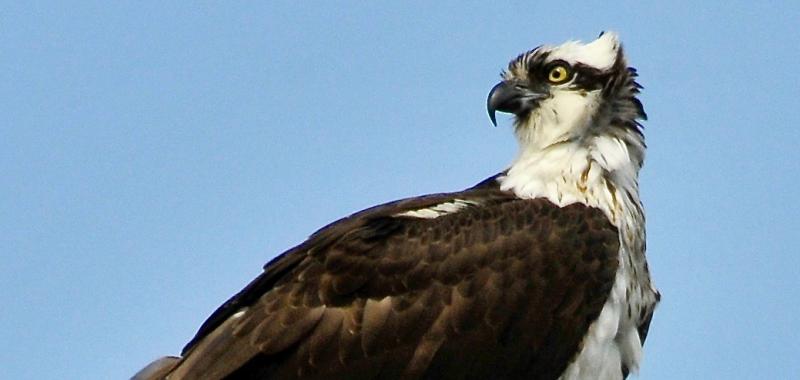Fish falling from the sky? Believe it.
In a single week, two striped bass fell out of the sky along Bay Avenue in Lewes. One fell in the front-yard garden of Steve and Nikki Nieblas.
Steve Nieblas is convinced it was an osprey that dropped the fish. “I knew immediately when I saw it what had happened,” he said.
Nieblas went out walking his dog April 5, and saw nothing unusual in his garden; when he returned 20 minutes later, a 20-inch striper had appeared. He estimates the fish weighed about 2 pounds, which is about the same size as another striper dropped a few houses away a few days earlier.
This is not the first time Nieblas has heard of a fish falling from the sky. He said a former renter told him he was working in the garden and had been hit on the arm by a falling fish.
Both stripers succumbed to injuries from the fall. Delaware Bay is a key habitat for stripers, or rockfish, as an area they migrate through each spring and fall.
More than a dozen osprey pairs have nests in the area of Lewes Beach along Delaware Bay where osprey can frequently be seen circling in pursuit of a meal.
An osprey expert working for the Delaware Department of Natural Resources and Environmental Control said she was surprised to hear about raining rockfish, another name for stripers.
“There are no documented cases I'm aware of and I've never seen an osprey drop a fish,” said Audrey DeRose-Wilson, DNREC program manager of aviation conservation and biodiversity.
She said it could happen, but it would be hard for an osprey to lift a heavy fish. She said the largest catch by an osprey on record is 2.5 pounds. DeRose-Wilson said osprey typically catch 6- to 13-inch fish.
“I've seen osprey catching all kinds of fish – trigger fish and flounder – but never a striper,” Nieblas said.
Ospreys are efficient hunters whose diet consists of only fish. Studies have shown that ospreys can catch a fish at least once out of every four dives. Most get their catch within 10 to 15 minutes of hunting.
Osprey population has rebounded
DeRose-Wilson said the population in the area has rebounded so well, state environmental staff no longer monitor osprey, and it is now considered a common species. However, she said there is a citizens’ volunteer group that monitors the birds and maintains data. “It's been a good success story,” she said.
OspreyWatch allows volunteers to monitor nests and platforms near where they live.
One of the major contributing factors to the ospreys' resurgence was banning the pesticide DDT in the early 1970s. Scientists believe the pesticide caused the egg shells to thin, contributing to a high mortality rate for young chicks. The birds almost became extinct; 90 percent of the population was wiped out.
Ospreys migrate from Central and South America to the Cape Region in late February and early March, and start to rebuild their nests. “Osprey are nest faithful and will return each year to the same nest or the same territory,” DeRose-Wilson said.
By mid-April, three or four eggs are laid, and within five weeks chicks begin to hatch.
Fish from the sky all over
Apparently, fish falling from the sky is not as unusual as one might think. A Google search turned up hundreds of reported sightings from places all over the world where fish “rained” from the sky with no explanation.
In May 2017, students at school in Oroville, Calif., came outside to find about 100 carp and bluegill fish on their school grounds. KTVU-TV reported the sky either opened up and rained fish or someone played a bizarre prank on the school.
Another TV station, Action News, cited Discovery Science experts who said the phenomenon occurs when water spouts from a relatively shallow body of water can pick up small fish and sometimes carry them for miles.
There are also reports of other animal species, including frogs, raining from the sky.

























































